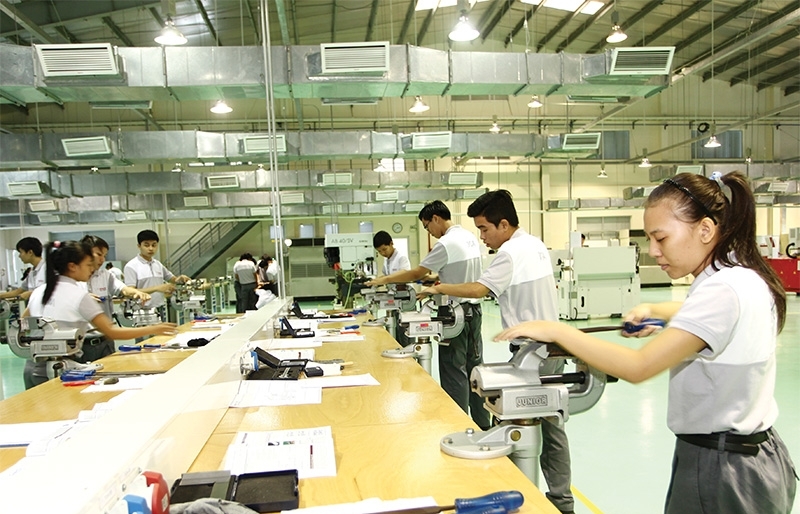The European Parliament (EP) on February 12 ratified the EU-Vietnam FTA (EVFTA) and the EU-Vietnam Investment Protection Agreement (EVIPA).

The EU was Vietnam’s second largest export market in 2019. The General Department of Customs (GDC) reported that the total import/export turnover between Vietnam and the EU (28 countries, including the UK) hit $56.4 billion in 2019, which accounted for 11 percent of Vietnam’s total import/export value.
| A study by the Ministry of Planning and Investment (MPI) found that if EVFTA took effect in 2019, Vietnam’s GDP would be 2.2-3.3 percent in 2019-2023, 4.6-5.3 percent in 2024-2028 and 7.1-7.7 percent in 2029-2033 higher than the GDP without EVFTA. |
According to VNDIRECT Securities, the tariff cuts will create a competitive edge for Vietnam’s exports over other rivals such as China and ASEAN member countries.
Vietnam’s footwear products, for example, will enjoy tariffs which are 3.5-4.2 percent lower than Chinese when the tariff is cut to zero percent after three to seven years.
A study by the Ministry of Planning and Investment (MPI) found that if EVFTA took effect in 2019, Vietnam’s GDP would be 2.2-3.3 percent in 2019-2023, 4.6-5.3 percent in 2024-2028 and 7.1-7.7 percent in 2029-2033 higher than the GDP without EVFTA.
Electronics, seafood and textiles and garments are believed to be the biggest beneficiaries from the agreement.
The EU is the second largest seafood export market for Vietnam which consumed $1.44 billion worth of products in 2018. About 90 percent of tariff line duties on seafood products will be cut to zero percent within 3-4 years from the current average rate of 14 percent.
As for electronic products, 74 percent of import tariff lines will be removed soon after the FTA takes effect, while the remaining will be eliminated within 3-5 years.
Electronics are Vietnam’s biggest export item to the EU, with the export value of $18.1 billion in 2018, which accounted for 43.3 percent of Vietnam’s total export value to the market.
The tariff cuts will not only create competitive advantages to Vietnam’s electronics, but also help encourage the trend of relocating factories to Vietnam to enjoy the preferential tariffs the EU offers to Vietnam.
As for textiles and garments, 42.5 percent of tariff lines will be removed soon after the agreement takes effect, while the remaining will see the tariff reducing gradually to zero percent within 3-7 years.
Meanwhile, pharmaceuticals, dairy and livestock products will face challenges in EVFTA.
Vietnam has committed to remove 48.5 percent of tariff lines on EU’s exports to Vietnam at the time when EVFTA takes effect, or 64.5 percent of total import value from the EU.
About half of the EU drug exports will be exempted from tax immediately and the remaining will enjoy this after seven years. Frozen pork will enjoy tax exemption after seven years, processed food after seven years and the tariff on chicken will be reduced to zero percent within 10 years.
Linh Ha

EVFTA to boost Vietnam’s growth in long term: GSO head
The EVFTA and EVIPA, scheduled to become effective in July, will help improve Vietnam’s business and investment climate and boost its institutional reform, thus contributing to fostering its growth in a long term.

Investors upbeat regarding EVFTA
European companies are eager to grasp new business and investment opportunities from the EU-Vietnam Free Trade Agreement and the EU-Vietnam Investment Protection Agreement.
 Vietnam is the second country in Southeast Asia, following Singapore, that has signed an FTA with the EU.
Vietnam is the second country in Southeast Asia, following Singapore, that has signed an FTA with the EU.